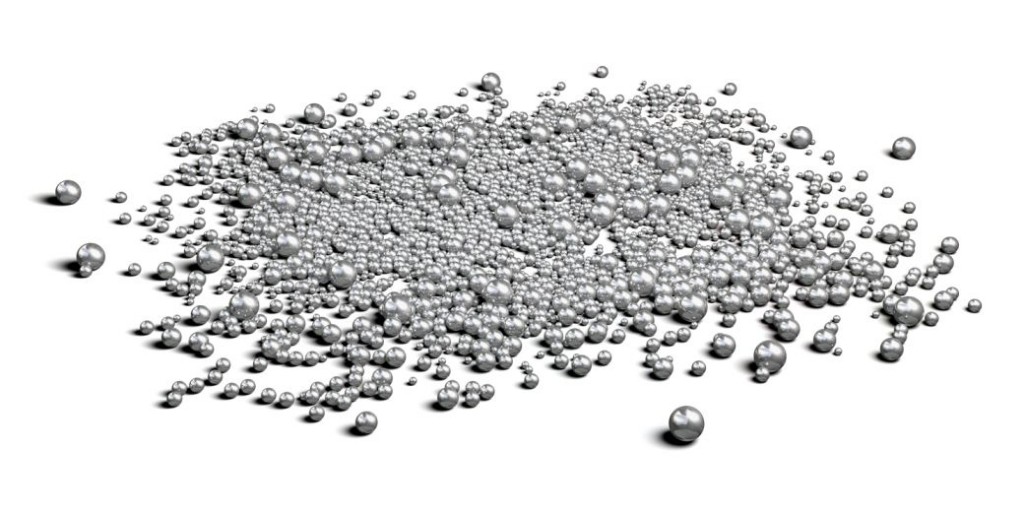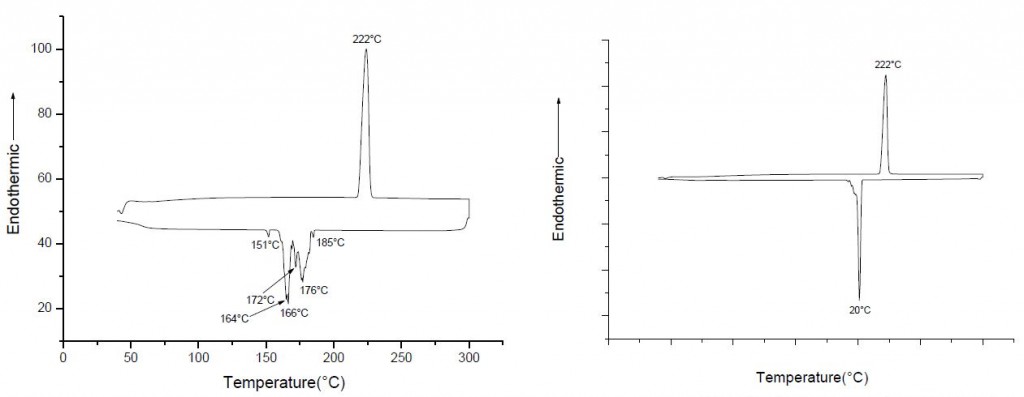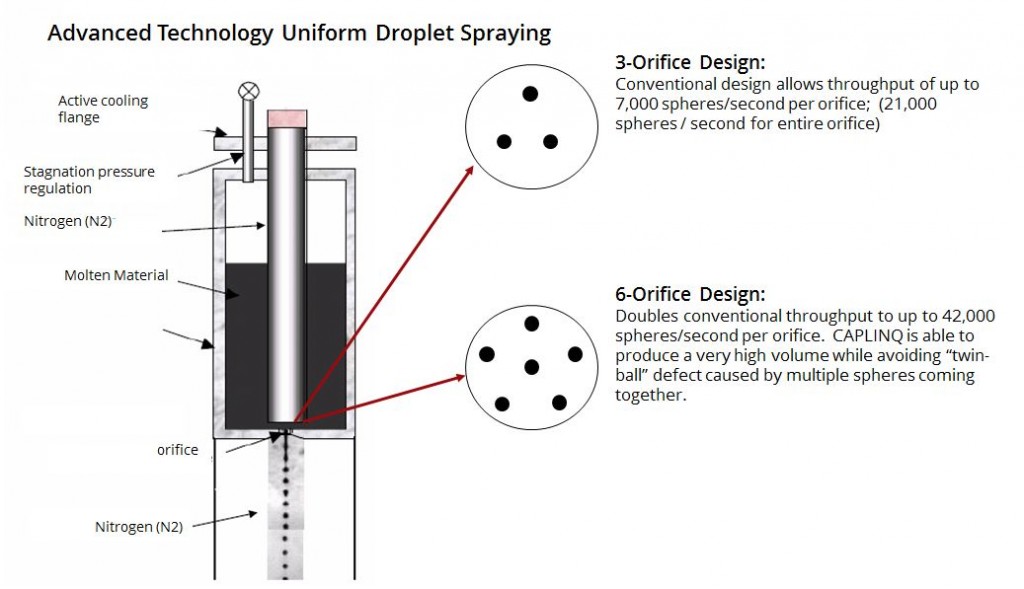Due to the tiny size of solder balls and the fact that there can be hundreds or even thousands of solder balls used on a single device, customers not only expect, but demand high quality solder spheres. So what exactly determines a high quality solder sphere? Solder ball quality is determined by a number of factors.

Solder Sphere (Ball) Quality Factors:
- Solder Ball Diameter & Spheroid Tolerance
- Advanced solder sphere smelting alloy technology for high alloy composition accuracy
- High solder sphere process capability Index (Cpk)
- Advanced anti-oxidation technology
- Advanced Solder Ball Forming technology
- Smart Solder Ball Packaging Practices
Advanced Solder Sphere Smelting Alloy Technology for High Alloy Composition Accuracy
There is a lot of technology that goes into a proper smelting technique. In order to get a proper solder alloy, it means that you have to start with each of the specific metals and melt them together to get the specific tin-lead solder alloys of Sn63Pb37 or lead free combinations of SAC305 solder balls (96.5% Sn, 3.0% Ag, 0.5% Cu) or any other of our lead free solder offerings including SAC105, SAC125N, SAC305, SAC387, SAC396 or SAC405. Obviously, before they are smelted there is some between or interim period that the metals are not properly mixed.
Unless this process is optimized, there will be alloy segregation in which you will have multiple peaks. It is obvious if there is not segregation of the alloy issue if we can see the distinct peaks that we are aiming for.

High Solder Sphere Process Capability Index Cpk
What you want to be able to show with your solder ball production process is that it not only uniform with a tight diameter and spheroid tolerance, but that it is also repeatable from one batch to the next. The way to measure this, is to measure not only the solder ball to ball variability but then also the batch to batch variability of the solder sphere production. An important measure of this is the process capability index or Cpk. Our process ensures a Cpk of at least 1.33 and is currently above 1.67.

Advanced Solder Ball Forming Technology
The conventional method of making solder spheres is to start with a solid solder alloy. Whether the alloy is a Sn63Pb37 or a Lead-free solder, it is first drawn out into a solder wire, or formed into a solder sheet. In solder wire form, the wire is cut very small and from the solder foil, tiny specimen are punched. These tiny solder pieces (they are not yet solder balls), are put into a hot oil which melts them and immediately creates a solder sphere or solder ball as we know them. The balls then continue to fall into cooler oil where they solidify as solder balls.
This practice is still very common with low end suppliers as it is a known, inexpensive process. There are many issues with this process however:
- Though the weight of the balls is known, there is still a lot of variation in the weight of each solder sphere
- There is no way you will get the solder sphere tolerance of 1.5% that CAPLINQ guarantees on its solder spheres
- This process is messy and prone to contamination and impurities
- It is much slower than the state-of-the-art advanced uniform droplet spraying technology
The solder spheres CAPLINQ offers are made using an advanced technology uniform droplet spraying. This process begins already with a molten metal alloy, whether it be Tin/Lead or a Leadfree solder alloy. Kept in an inert nitrogen atmosphere, the solder alloy is then blown through an orifice into again another nitrogen environment through either a 3-orifice or 6-orifice design. Here’s the difference:
- 3-Orifice Design: This is the conventional design by manufacturers who are still using older equipment to produce solder spheres. This design produces high quality solder spheres, and each orifice can produce up 7,000 solder spheres per second per orifice, which means the entire design produces up to 21,000 solder spheres per second or 75.6 million spheres per hour.
- 6-Orifice Design: CAPLINQ’s solder spheres are produced using state-of-the-art 6-orifice designs. This design produces the same high quality solder spheres but double the solder sphere output to 42,000 solder balls per second or a total of 151.2 million solder spheres per hour.

Smart Packaging Practices
Solder spheres can oxidize. You can read this article on solder ball oxidation, but let it be known that packaging can go a long, long way to reduce oxidation and do ensure that your solder spheres have a long shelf-life – in many cases beyond the expiration date – simply by keeping the solder spheres sealed in their original packaging. CAPLINQ packages most of its solder spheres in quantities of 250,000 pieces. The reason why is that after production, the solder spheres are immediately packaged and sealed in nitrogen. Once the jar is unsealed, and opened the nitrogen is gone, and there is no more inert blanket to protect them.
Some manufacturers and specifically some solder ball distributors buy large quantities of solder spheres in few jars and then repack the solder spheres into jars with fewer quantities. We have done our homework, and discussed with many customers, and they agree that the 250,000 solder spheres per jar is the right balance of number of pieces to number of jars. That’s why every jar you receive from CAPLINQ will be sealed. It’s your way of knowing that the nitrogen is packed right inside.
CAPLINQ supplies a range of solder spheres including Tin/Lead (Sn63Pb37) Solder Spheres or our Leadfree (Pb-free) Solder Spheres including SAC105, SAC125N, SAC305, SAC387, SAC396 or SAC405 and 4N Pure Tin Sn100 Solder Spheres.
We also now offer Bi58Sn42 Eutectic Leadfree Solder Spheres and Bi57Sn42Ag1 Near-Eutectic Leadfree Solder Spheres. You can also contact us if you have further questions on buying solder balls.



We are interested in purchasing solder ball copper-tin (75/25)
Th alloy has:-
Tin 20%
Nickel 5%
Alluminium 3%
Copper 71%
Balls of dia 2.25mm wt about 130-Mgms
Qty 500,000 pcs per month
We can also take wire of 2.50mm dia
Hurrah! After all I got a blog from where I be capable of
in fact get valuable data concerning my study and knowledge.